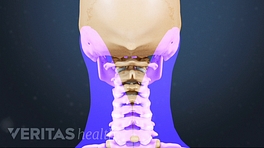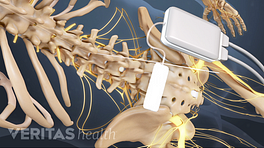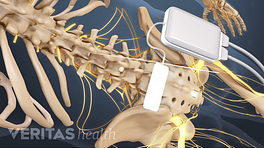Spinal cord stimulation for chronic neck pain uses electrical pulses to stimulate nerves in the spinal cord, with the goal of interfering with the path of pain signals as they travel to the brain.
The first step in the process is a trial period of spinal cord stimulation.
The person is sedated, given a local anesthetic, or both. Next, thin wires with electrodes attached, called leads, are inserted into the space surrounding the spinal cord via a thin hollow tube.
The area where the leads are placed is called the epidural space.
Next, the leads are attached to a generator outside the body.
The patient is then awakened and asked to give feedback on where additional current is needed for pain control. Adjustments are made by the doctor to ease all the painful areas, and the leads are left in place.
The person then tries spinal cord stimulation for several days.
If the person decides the trial has provided sufficient pain relief, the next step is to implant a permanent spinal cord stimulator.
Permanent implantation is similar to the trial period process, but with some extra steps.
First, an incision may be made to allow removal of part of the lamina, a small bone over the back of the spinal cord. This makes room for the larger leads, often used in permanent spinal cord stimulation.
Once the leads are in place, the person is awakened and asked to provide feedback on whether all areas of pain are covered. When coverage is complete, the person is sedated again.
Next, the surgeon creates a pocket between the skin and the muscle in the upper buttock or chest, and implants a small generator.
The leads are then tunneled to the generator, allowing current to flow.
After the procedure, the doctor programs a small hand-held controller that sends signals to the generator. The patient can then adjust the type of pain relief needed for various situations.










